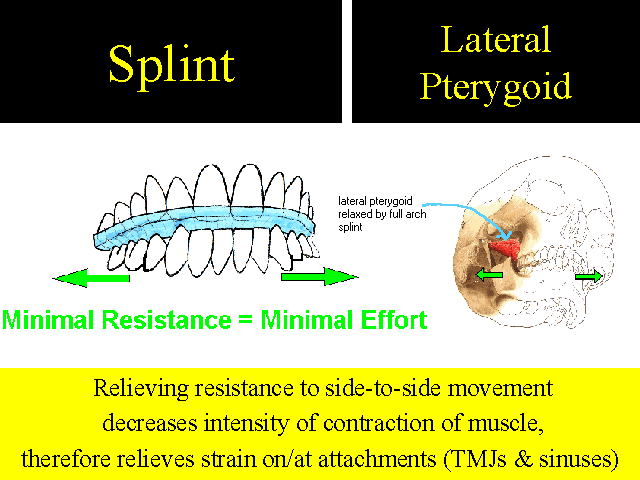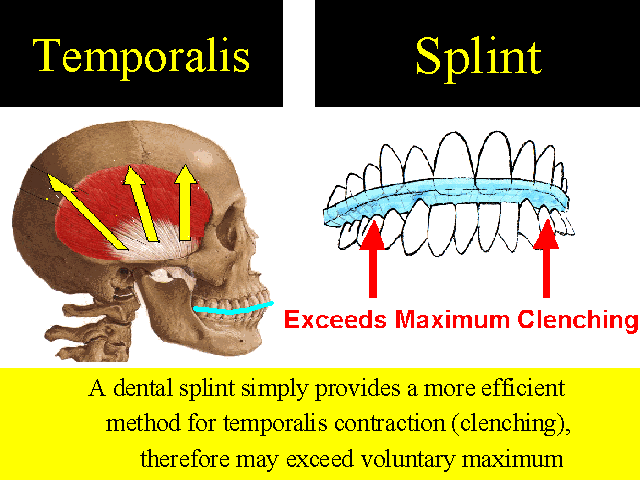Biteguard and NTI
A traditional splint allows minimal resistance in side to side movement. This lack of resistance gives the lateral pterygoid muscles a chance to rest (muscle with blue arrow). But a traditional splint does not protect the temporalias muscle in the same way possably causing the temporalis muscle to go into spasm. This is usually felt as a tension headache in the temple region.
Generally, a traditional splint is perfect for helping relieve pain that is felt around the joint (the area foward of the ear and just below the cheeks).
Below is a diagram of an NTI on the right (labeled B) and an anterior discluder (labeled A).

An NTI provides minimal resistance to side to side movement like a traditional splint. Additionally, it uses one of the bodies protective reflexes to prevent heavy clenching pressure. The combined effect is less pressure on the temporalis and the lateral ptergyoid muscle. For more details please follow this link.


